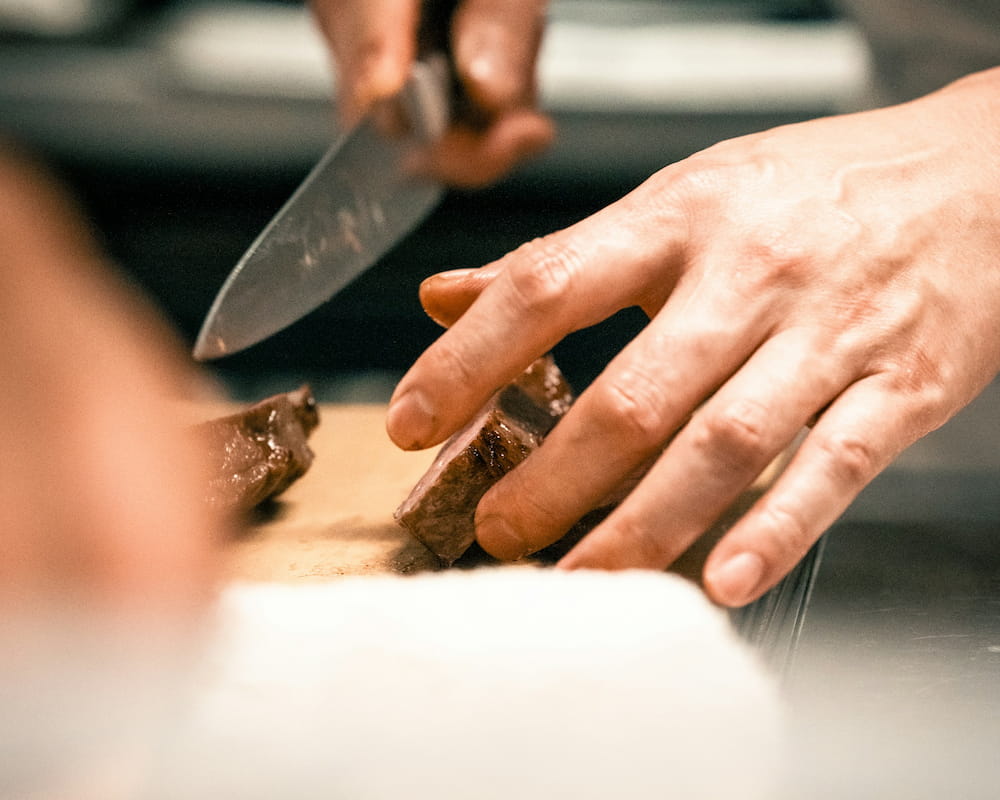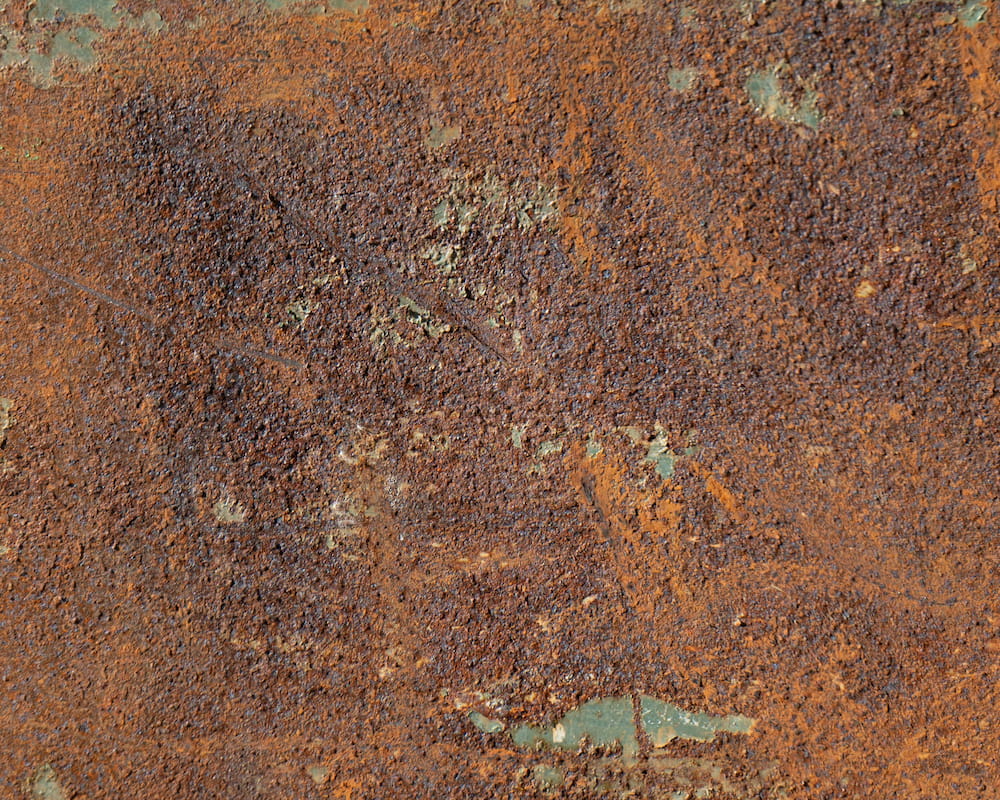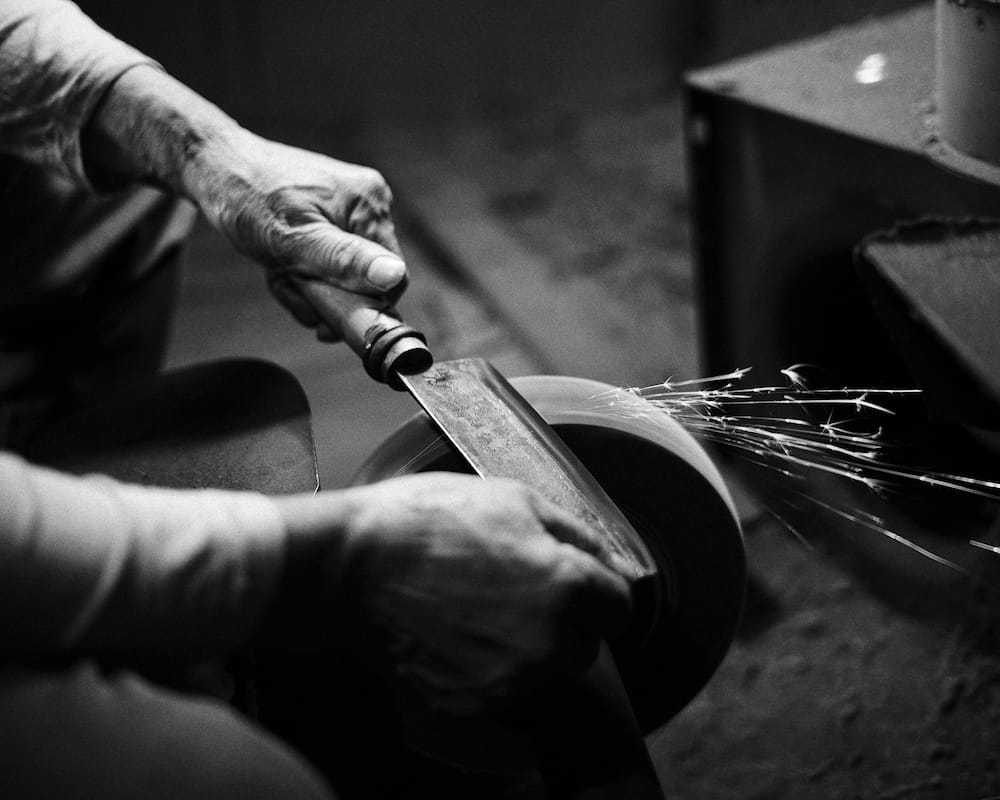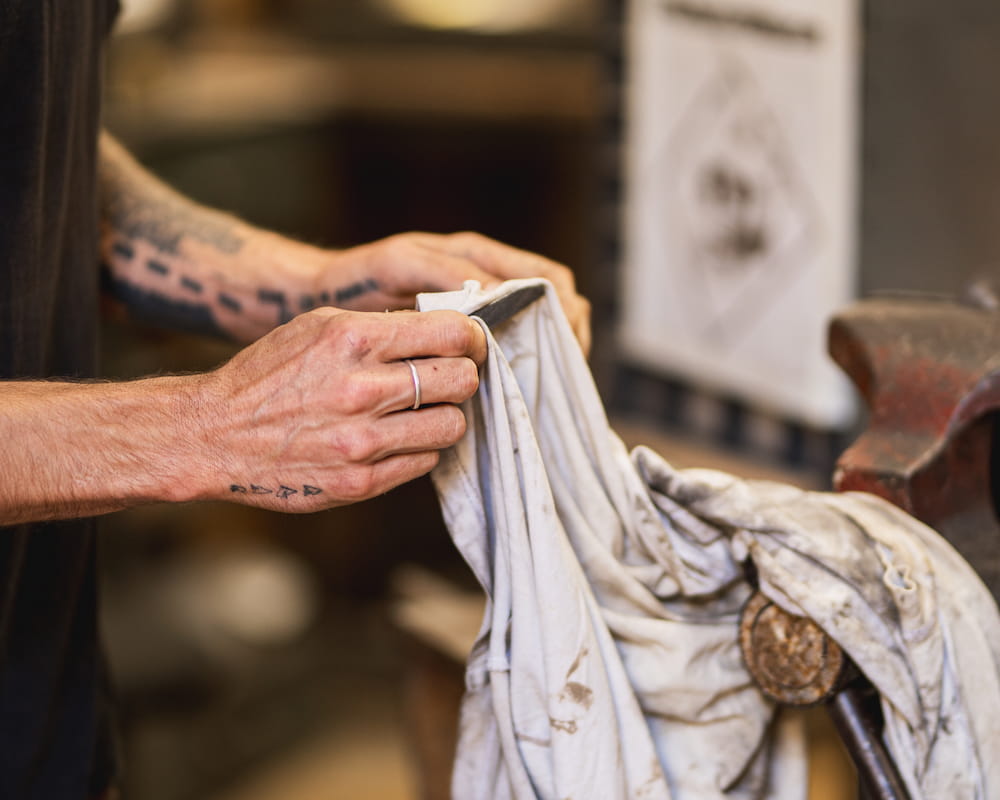Your cart
It seems that your cart is empty.
Headlines
Your cart
It seems that your cart is empty.
Headlines


Carbon steel: Carbon steel blades are renowned for their ability to provide an exceptional edge. Thanks to a high carbon content, this steel allows for fine and precise sharpening, ideal for clean and delicate cuts. In the kitchen, carbon steel knives are particularly appreciated by chefs and knowledgeable enthusiasts, as they allow for effortless cutting, even on hard ingredients.
Stainless steel: Stainless steel, although slightly less sharp on average, remains an excellent option for most daily uses. Its composition, which includes chromium for corrosion resistance, provides a satisfactory edge that can be maintained with regular sharpening. Advances in modern stainless steels also allow for durable edges, although they sometimes require a bit more work to achieve as fine an edge as carbon steel.

Stainless Steel: As the name suggests, stainless steel is highly resistant to corrosion. This makes it an excellent choice for humid environments or for users seeking a low-maintenance knife. However, it is important to note that 'stainless' does not mean 'maintenance-free.' Even a stainless steel knife benefits from cleaning after use and quick drying to extend its lifespan. Additionally, applying a light coat of food-grade oil from time to time can help keep the stainless steel in perfect condition.
Carbon Steel: While carbon steel blades are highly performant, they are more prone to rust. Without regular maintenance, they can oxidize quickly, especially if exposed to moisture or acidic foods. To prevent this, it is recommended to clean and thoroughly dry your carbon steel knife after each use, then apply a thin layer of oil to protect it. This ritual is essential to preserve the blade and prevent any corrosion.

Carbon steel: Carbon steel knives are often preferred for their ease of sharpening. Thanks to their composition, they can be sharpened quickly and offer an extremely precise cutting edge. This type of steel is ideal for those who enjoy regularly maintaining their knife and who seek a razor-sharp edge at all times.
Stainless steel: Stainless steel knives are a bit more difficult to sharpen due to their harder structure. However, once sharpened, they retain their edge longer under standard use conditions. For good results, it is advisable to use quality sharpening stones suitable for stainless steel and to perform periodic maintenance to keep the blade performing well.

While stainless steel requires less care than carbon steel, it is still important not to neglect its maintenance. Cleaning your stainless steel knife after each use, drying it quickly, and keeping it sharp are simple steps that help extend its lifespan. For carbon steel, more thorough maintenance is necessary, including the regular application of a thin layer of oil to protect the blade from moisture and prevent any rust formation.

The choice between a stainless steel knife and a carbon steel knife depends on your needs and lifestyle. If you are looking for a low-maintenance knife, more resistant to moisture and corrosion, stainless steel will probably be your best choice. However, it is still important not to neglect the maintenance of your stainless steel knife to ensure its longevity.
On the other hand, if you prioritize cutting performance and are not afraid to spend a little time on maintenance of your knife, carbon steel will offer you a superior edge and easier sharpening. This material is ideal for those who consider the knife as a craft tool, requiring care and respect.